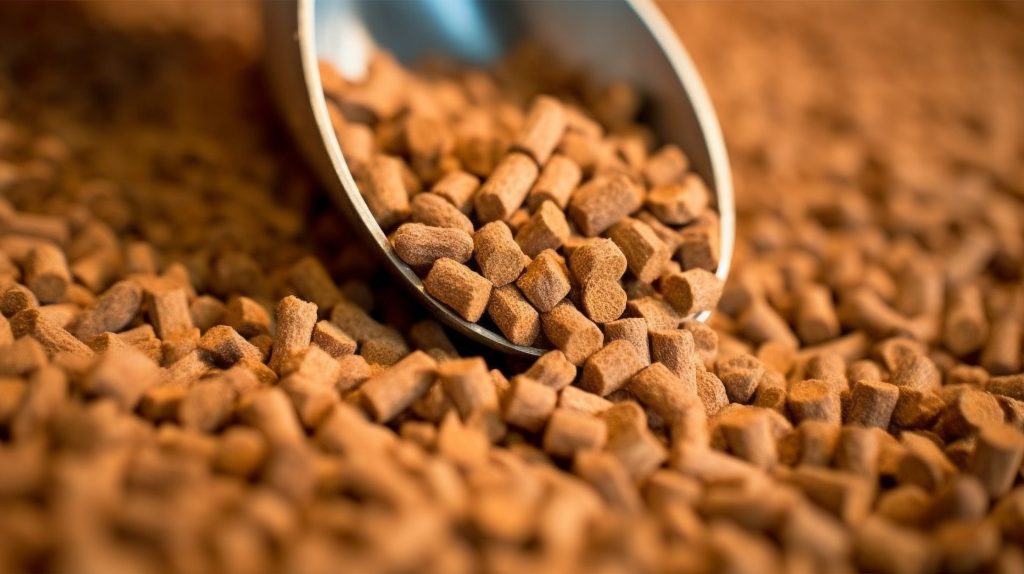The use of fats and oils in animal feed contributes not only to the energy density of diets but also to the supply of essential fatty acids and fat-soluble vitamins. However, their high susceptibility to oxidative degradation presents a significant challenge to maintaining feed quality over time.
Oxidation of fats leads to the formation of harmful compounds, reduces nutrient availability, and compromises both animal performance and product stability. This is particularly relevant in modern formulations for animal nutrition, where byproducts such as acid oils (AO) and fatty acid distillates (FAD) are increasingly used for economic and sustainability reasons.
This article explores why oxidation occurs, how it affects feed quality, and what’s in our hands to fight it.
Why fats and oils in animal feed are at risk of oxidation
Fats and oils are chemically unstable and easily oxidized. Exposure to environmental factors such as heat, light, and metal ions can accelerate lipid peroxidation, initiating a chain reaction that deteriorates the quality of the fat over time.
Oxidation of fatty acids begins when the unsaturated ones react with oxygen, forming unstable hydroperoxides. These primary oxidation products quickly degrade into secondary compounds such as aldehydes and ketones, which contribute to off-flavors, loss of nutritional value, and potential toxicity.
The risk of oxidation is not limited to any particular type of lipid, but it increases with the use of AO and FAD, byproducts of vegetable oil refining that often contain higher levels of free fatty acids and pro-oxidant residues.
Additionally, variations in storage conditions, handling practices, and the presence of trace contaminants can significantly influence the rate of oxidation. Without proper stabilization, even high-quality lipids can degrade rapidly, undermining feed consistency and safety and affecting the feed supply chain.
How lipid oxidation affects feed quality and shelf life
When oxidation occurs, fats undergo chemical changes that can drastically alter their nutritional and functional properties. One of the primary consequences is the loss of essential fatty acids and fat-soluble vitamins like tocopherols (vitamin E), which play a protective role against oxidative damage. Oxidation of fats not only offers reduced energy value but also introduces potentially toxic compounds, such as aldehydes and ketones, which may negatively impact animal health and performance.
Studies have reported that diets containing oxidized oils can impair fat digestibility, especially in the presence of high molecular weight polymeric compounds. These compounds resist enzymatic breakdown, reducing nutrient absorption and potentially leading to metabolic stress in animals. Moreover, prolonged feeding of oxidized fats has been associated with reduced growth performance and diminished oxidative stability in animal products such as meat and eggs.
The impact on shelf life of animal feed is equally concerning. As oxidation progresses, feed quality is decreased. Fats develop off-odors and flavors, leading to rancidity, rendering them less palatable and increasing feed refusal. This, in turn, disrupts feeding patterns and compromises productivity, especially in species highly sensitive to sensory feed quality.
Natural antioxidants and best practices to prevent lipid oxidation in fats and oils in animal feed
The industry increasingly relies on natural antioxidants such as tocopherols, natural forms of vitamin E derived from vegetable oils, for protecting fats and oils in animal feed. These compounds interrupt the oxidation chain reaction by scavenging free radicals, thus stabilizing unsaturated fatty acids and preserving nutritional value. They are highly soluble in lipid media and can be introduced into the productive process.
In poultry, when diets are rich in unsaturated fatty acids (6% linseed or 10% fish oil), the levels of vitamin E in the tissues become strongly depleted, whilst the levels of lipid peroxidation are significantly increased, if the provision of dietary vitamin E is insufficient [1].
Natural antioxidants are particularly relevant for stabilizing AO and FAD, which are increasingly used due to their sustainability benefits. These byproducts from refining are cost-effective and support circular economy models, but their instability requires customized antioxidant strategies. The botanical origin of the fat, such as soybean, sunflower, or palm, also influences the type and concentration of antioxidants needed.
Unlike synthetic antioxidants, tocopherols are accepted across global regulatory frameworks for use in animal nutrition.
At Btsa, we are committed to providing reliable natural antioxidants for animal nutrition. We have developed a portfolio of solutions based on tocopherols, formulated specifically for the animal feed sector. Oxabiol® is a tocopherol-based antioxidant that ensures longer shelf life for animal food by protecting it against oxidative rancidity.
Our solutions help preserve shelf life, but not only that. They ensure a consistent nutritional delivery and better animal performance. We are aligned with industry demands and work every day to make manufacturers’ lives easier.
Sources
[1] Urso UR, Dahlke F, Maiorka A, Bueno IJ, Schneider AF, Surek D, Rocha C. Vitamin E and selenium in broiler breeder diets: Effect on live performance, hatching process, and chick quality. Poult Sci. 2015 May;94(5):976-83. doi: 10.3382/ps/pev042.

